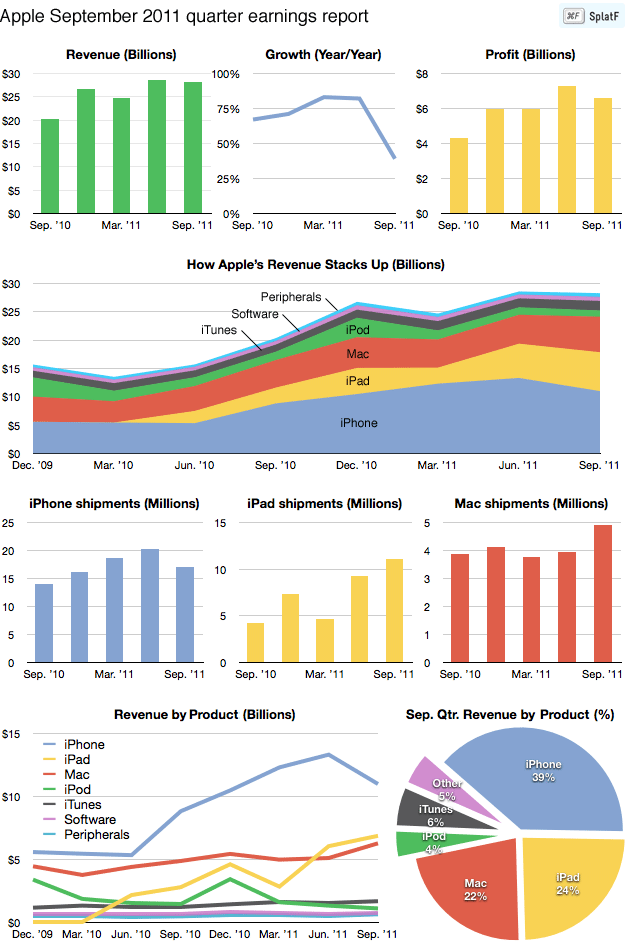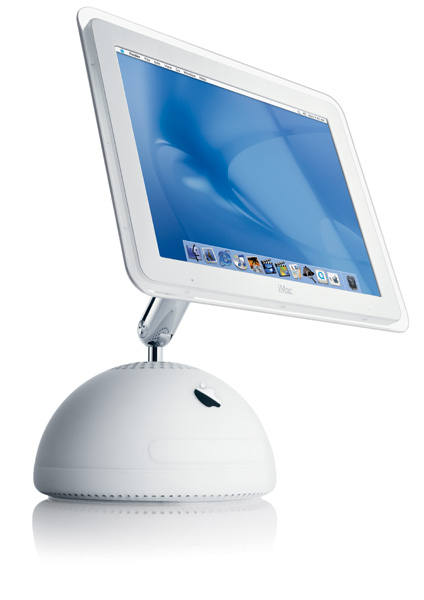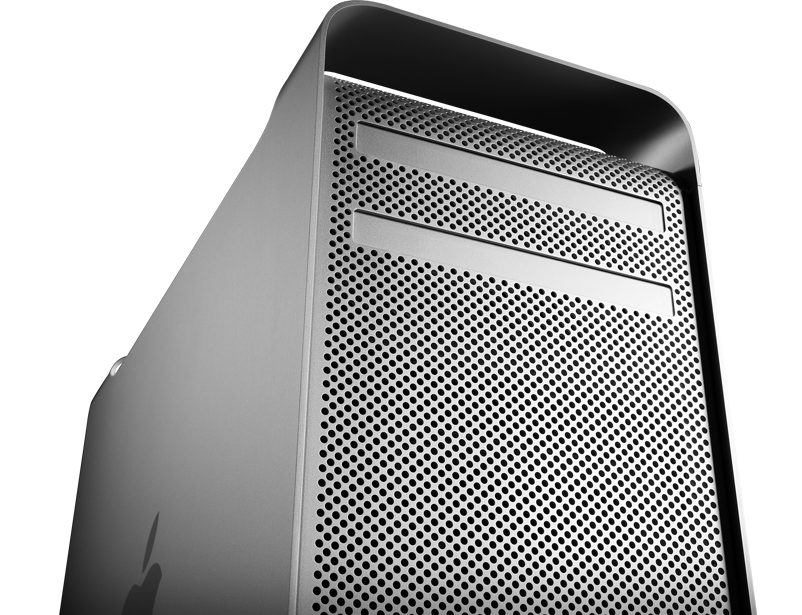Last Monday, AppleInsider ran this story (rumor) that Apple is “questioning” the future of the Mac Pro:
“Despite the coming availability of a new generation of Sandy Bridge desktop CPUs suitable for advancing Apple’s Mac Pro line, the company has reportedly been evaluating whether to continue to invest in furthering its full-sized workstation line beyond this year in the face of limited sales.”
Which is a rumor I wouldn’t put much credence if it weren’t for a few recent items.
The first item is the fact that Apple’s business is decidedly driven by sales of iPhones and iPads. While Apple has said that its desktop business, if taken on its own, is ranked 110th in the Fortune 500. In 2010, Apple’s Mac business was 33% of it’s total revenue; $22 billion US [1. Tim Cook, “Back to the Mac”, from the October 20, 2010. Engadget live blog of the event. See the 10:00 AM & 10:01 AM entries.]. But the question remains: How much of that $22 billion was from Mac Pro desktops versus laptops or iMacs? Mostly laptops.
The second item is the recent “dumbing down” or “castrating” of the recent software, both system and applications, for the Mac OS. This past summer Apple released Mac OS 10.7 and a new, completely rethought and rewritten version of Final Cut Pro. Both contained some great new features, but it was clear that geeks like me who like the beauty and power of the Mac OS but also like to upgrade their systems were a minority for Apple. Just as an example, my early 2008 Mac Pro has four drives, including an aftermarket solid state boot drive, as well as a higher powered graphics card that I installed this year. Final Cut Pro was particularly egregious, eliminating a ton of features that video pros had come to rely on. The outcry so substantial that Final Cut Pro X had an update (10.0.1) that warranted it’s own web page. When was the last time that happened for a x.x.1 release of ANY software from Apple? The update contained several mission-critical features for pros, but the updated software still leads, rightly, to a general malaise among content creators, aka, professionals who use a Mac to make things. If these latest software moves are the signposts telling which way Apple will go, that malaise is well-founded among pro users.
The third item is a 2010 statement that Steve Jobs made at D8 about the transition to a post-PC world:
“When we were an agrarian nation, all cars were trucks. But as people moved more towards urban centers, people started to get into cars. I think PCs are going to be like trucks. Less people will need them. And this is going to make some people uneasy.” [2. MacBreak Weekly, Episode 271, “Sacred Firepit”, 01:24:00 (approximately).]
Color me uneasy. While I appreciate the analogy, I’m worried that my next Mac Pro tower could be my last. Sure, I could probably build a Hackintosh, that road is full of obstacles and potholes.
Fourth is the product placement that Macs and Mac-related stuff has where Apple does public facing stuff like ads, websites, stores, etc.

Apple Store location: Upper East Side, NY NY

Apple Store location: Paris Opéra
In those images, look at the tables. It’s all about the iPhones and the iPads. The computers? Not so much retail space. This makes sense in a purely business/bottom line way:

chart from this post on Splatf
While the Mac business is growing, it’s clear that Apple is a mobile device company first and foremost. They are a consumer and/or prosumer company, despite having a massive professional vertical. Alex Lindsay said on MacBreak Weekly [3. MacBreak Weekly, Episode 271, “Sacred Firepit”, 01:33:36.]:
“Apple sits on, if they choose to continue to develop it, a perfectly vertical market. Which is that everything when it comes to content, everything from the creation to the final viewing Apple sits on it. They have a vertical market that they have built from producers to consumers that makes Krupps Arms [4. I believe Mr. Lindsay is referring to Krupp Arms Works (Wkipedia). Here’s a Straight Dope article containing a bit about the more recent history (WWII) of Krupp: Did Krups, Braun, and Mercedes-Benz make Nazi concentration camp ovens? Did Hitler name the Volkswagen?] look like a walk in the park.”
I straddle that vertical. Which are probably the best four words I’ve ever written from a nerd perspective. My business is one of producing content (not so much for this site, shhh). In order to do that effectively, while I am a producer, I am equally a consumer. In producer mode, I move lots of big files around and push the machine pretty hard. In consumer mode, I’m less in need of a high powered desktop machine, but there are days when even in passive mode, I’m glad I’m sitting on a Mac Pro versus a MacBook Pro hooked up to a big monitor (did that in 2006-7; wasn’t happy with the performance).
Sure, I could do my job on an iMac. But it would make me less productive. I base this on what I do now on my early 2008 Mac Pro, that is, hands down, the best machine I’ve owned and the one that I’ve done the most varied work on ever, precisely because of its power. One example, when we do code revisions and launches, I can run two or three virtual PCs (Windows XP, Windows 7 and a version of Ubuntu) at the same time I’m running the Mac OS. I have thrown gobs of High Definition video transcoding and rendering at it. I’ve done music with it. You can take my Mac Pro from my cold, dead hands.
I’ll add that I’ll eat my words if Apple showed me an iMac that would match my Mac Pro (and I’m sure somebody out there has those numbers), but I’d have to see some impressive real-world tests before I’d eat those words. It’s not just processor speeds and bullet points. Real world. Like: transcode and downsample 50 HD 1080p clips ranging from a few seconds to a few minutes from h.264 into Apple Pro Res 422HQ at 720p. In other words a shit ton of processing. The Mac Pro did it in about 40 minutes. I don’t know what a current iMac would do it in, but I’m certain it would take a lot longer.

As I write this, I think back to 2002. I needed a new computer. I had a monitor, so I looked hard at the Dual-G4 “tower” and couldn’t justify spending over $3,000 for a computer. The new “sunflower” $1799 G4 iMac 90 days same as cash? DONE. I loved that little machine. Until I got a full time job sitting in front of a 1.4GHz dual processor G4 “quicksilver” box. That G4 remains in the top 5 Macs I’ve ever worked on. It smoked my home iMac and made me realize that I’m a pro who needs a pro machine. One other note: the useful lifespan of that iMac was about 18 months to 2 years. After that we started feeling pain.
I learned in 2003 that bullet points and printed specs are great, but don’t tell the whole story. One of my beefs with that 2002 iMac was that while the OS could clearly handle the way I worked, it did everything slowly. I couldn’t upgrade the RAM past a certain point. I couldn’t get a faster hard drive inside without voiding the warranty. Firewire 800 hadn’t appeared on an iMac yet. I’ll never forget one of the most intense days in 2003 I spent building production kits on that dual processor G4. I was opening and editing documents in InDesign, saving out print quality PDFs, then doing a collect for print which collects all the placed images (several CMYK tiffs at 50-150MB), zipping up the completed collections and uploading them first to the printer’s FTP as well as to international offices for translation and printing. I was, at more than one point doing all of that at once. And the machine was barely breaking a sweat. Each production kit was around 100-150 MB with a couple smaller and a couple larger. The images that were included were big enough to do brochures and posters, so that’s why the kits were so big. More importantly, I was moving a lot of data around, hitting the hard drive from multiple application sources and saturating the network port. Power. Incredible. I’d probably still be generating those kits on that 2002 iMac.
I’m sure today’s iMac is a great machine. I know it is. But I don’t think that it’s got the speed to work the way that makes me the most productive.
Finally, here’s a fantastic technical breakdown from Marco Arment, developer of the excellent Instapaper, about the Mac Pro and the developments that point to its demise, the biggest being the cost of Intel Xeon level processors.
I can see the future. I’m wondering if Apple will produce a compelling professional user strategy going forward or if Apple will abandon this market segment to focus more fully on iPads, iPhones and MacBook Pros. The future I see doesn’t involve Apple making a hulking desktop machine.
Footnotes:

